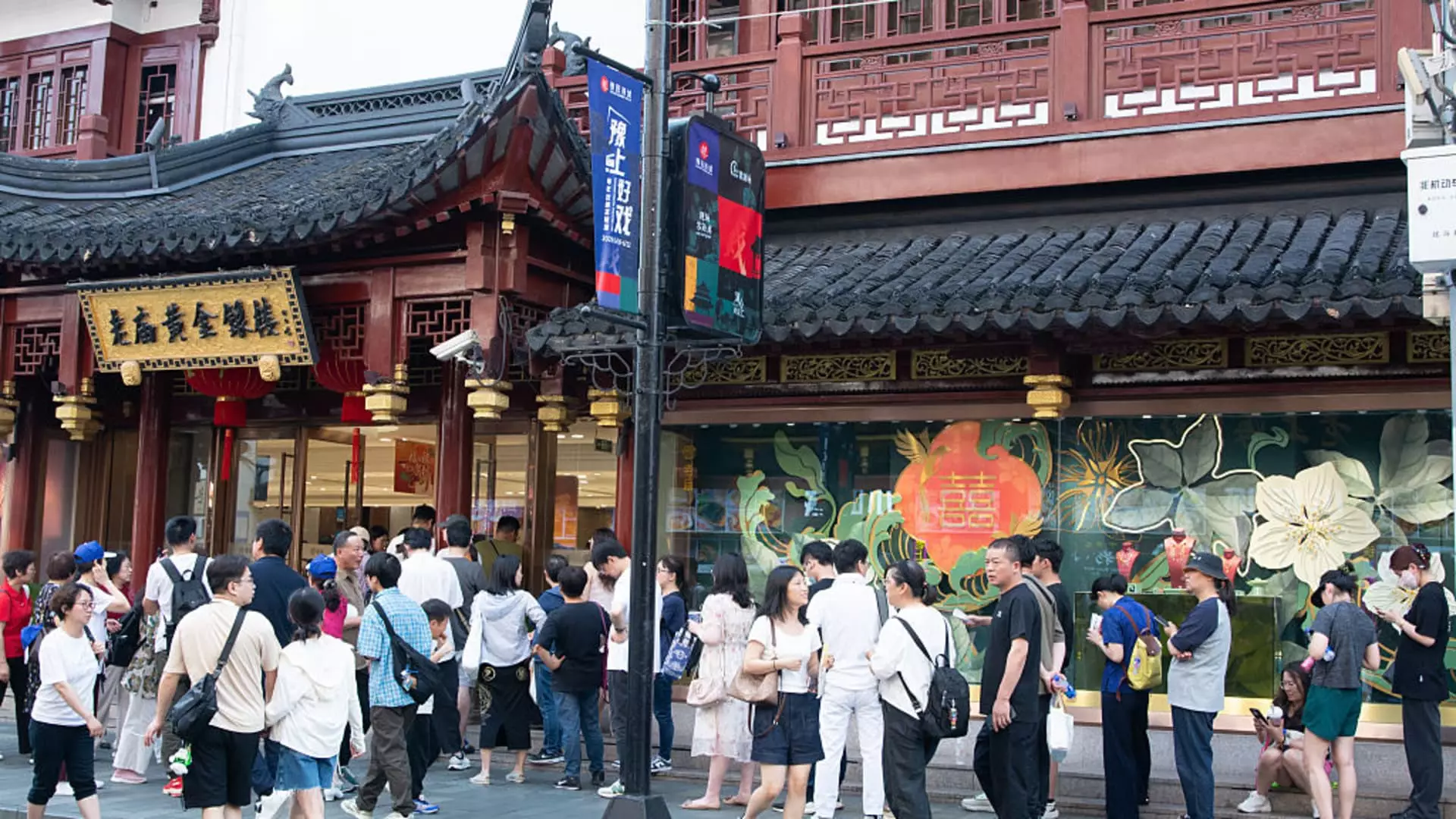The recent surge in China’s retail sales, which witnessed a remarkable 6.4% growth year-on-year, is not merely a statistic; it is an illusion fraught with deeper economic implications. This uptick, touted as the fastest since late 2023, comes as a relief to an economy grappling with persistent deflation and stagnation. However, such growth should not be mistaken for genuine revitalization of consumer sentiment. Instead, it highlights the reliance on government interventions and raises concerns regarding the sustainability of this recovery.
The National Bureau of Statistics (NBS) attributed this unexpected rally in retail to several initiatives, including government subsidies, a consumer goods trade-in program, and a surge in e-commerce activity ahead of significant sales events. Yet, analyst Zhiwei Zhang’s cautious remarks warn that this surge might be a mere flash in the pan, at best. With the consistent decline in property prices and the government’s frustrating inability to stabilize this critical sector, the fundamentals supporting this retail growth are shaky at best.
Property Market Downturn: A Weight on Consumer Confidence
The deepening contraction within China’s property market, where investment fell by an alarming 10.7% in the first five months of the year, creates a toxic cocktail for consumer confidence. As property prices in major cities continue to demonstrate a downtrend—1.7% in tier-1 cities and even steeper in tier-2 and tier-3 cities—the financial unease faced by consumers is palpable. The backbone of many households’ wealth is deteriorating, exposing them to heightened economic vulnerability.
The government’s acknowledgment of the need for further efforts to stabilize housing prices underlines a significant challenge for policymakers. Chinese consumers are acutely aware of the adverse impacts this downturn has on their personal finances, making them more circumspect in their spending habits. The paradox arises: consumer spending is touted as a recovery beacon while its foundation—confidence in assets—is eroding. Thus, we are left to wonder whether the retail sales numbers are anything more than a temporary reprieve from impending economic storm clouds.
Exports: A Fragile Lifeline
While retail sales recovery may look optimistic at first glance, it must be contextualized within the broader realm of China’s trade landscape. Although exports showed resilience overall, the extraordinarily sharp decline of over 34% in U.S.-bound goods cannot go unmentioned. This erosion indicates a heavy reliance on alternative markets—Southeast Asia, Europe, and Africa—while also exposing the fragility of China’s economy in the event of a prolonged trade dispute with the West.
The recent tariff truce between Beijing and Washington provides temporary respite, but the sustainability of any export growth is tenuous, as the underlying economic environmental factors remain unchanged. A sluggish global environment, combined with the rising costs of compliance, continues to weigh heavily on export efficiencies. The specter of reduced consumer demand domestically and internationally signifies an uncertain road ahead.
The Role of Government Interventions
In a bid to stabilize the economic situation, the Chinese authorities have implemented subsidies and incentivized programs to stimulate consumption. However, the question lies in the long-term effectiveness of such measures. Experts caution against the notion that these short-term remedies will transition into a sustained consumption recovery. The fact that local governments have already begun pausing consumer goods trade-in programs painfully illustrates the dependency on government funding for consumer confidence.
Moreover, the expectation that further government stimulus will only emerge when growth falters below 4.5% is indicative of a reactive rather than proactive economic policy. This lack of foresight could transform a manageable downturn into a more severe economic crisis. The reliance on subsidies is essentially a band-aid on a wound that requires surgical intervention—a serious reconsideration of policies that stimulate genuine market engagement rather than superficial spending boosts.
Looking Ahead: Cautions for a Potential Snapback
China’s economy faces a precarious balancing act between maintaining growth and addressing festering issues that threaten its stability. The outlook for consumer spending remains grim, primarily due to external factors—like imposed tariffs and tightening international trade—as well as internal strife seen in the housing market and corporate investment sentiment.
As leading economists foreshadow potential pitfalls lurking in the near future—the “triple whammy” effect of shopping festival endings, subsidy suspensions, and tightening dining curbs—it’s paramount for Chinese leaders to adopt a long-term strategy. They must shift focus from mere statistics that signify temporary growth surges to meaningful structural changes that foster genuine consumer engagement and investment stability. Without addressing these issues, the brief spurt in retail sales may merely foreshadow a much deeper and more troubling economic downturn.

